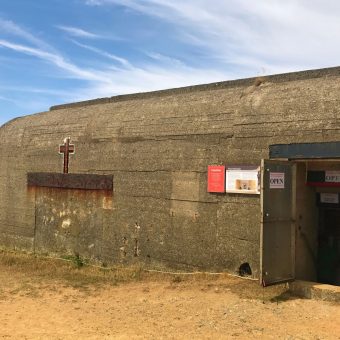One of the most amazing things about Guernsey is the abundance of history, heritage and culture, some of it obvious, some of it less so. One of the latter examples is the Shrine of the Sacred Heart. Tucked away in an old German bunker at Fort Hommet, between Vazon and Albecq, stands this impressive, albeit hidden, work of art.
The shrine has an interesting history starting with the construction of the bunker in which it is created during the German Occupation of the island from 1940-1945. Later in the 1960s Hubert (Bert) Le Galloudec decided to transform this now unused bunker into a tribute to the prisoners and forced labourers brought to Guernsey during the occupation to build the fortifications. He collected shells off the surrounding beaches and used them to create the religious scenes and biblical quotes that now adorn the walls.
The bunker was opened to the public whilst Bert continued his work but was closed in the 1970s due to vandalism. Sadly Bert died in 1991 but in 2005 a committee was set up dedicated to restoring the shrine to its former glory. It was later reopened to the public where it now opens on certain dates throughout the summer months.
The collection of pretty yellow periwinkle shells that decorate the walls provide a stark contrast from the harshness of the concrete and metal structure of the bunker. A visit to see the Shrine is the only way to truly appreciate the painstaking work that it must have taken to create such a detailed work of art. One of the adjoining rooms in the bunker now houses a huge amount of information, press releases and history about the Shrine alongside pictures of the restoration work. Whist visiting, also look out for the German writing that has been preserved on the walls from the occupation period giving instructions and warnings to those who would have used the bunker during the war- a strong reminder of its original purpose.
All in all there is so much to see and discover in such a small space. A visit to the Shrine won’t take long, probably no more than 20 minutes but is certainly worthwhile to see such a unique and hidden part of Guernsey’s occupation past. To find out more about opening dates and times contact the Guernsey Tourist Information Centre.


